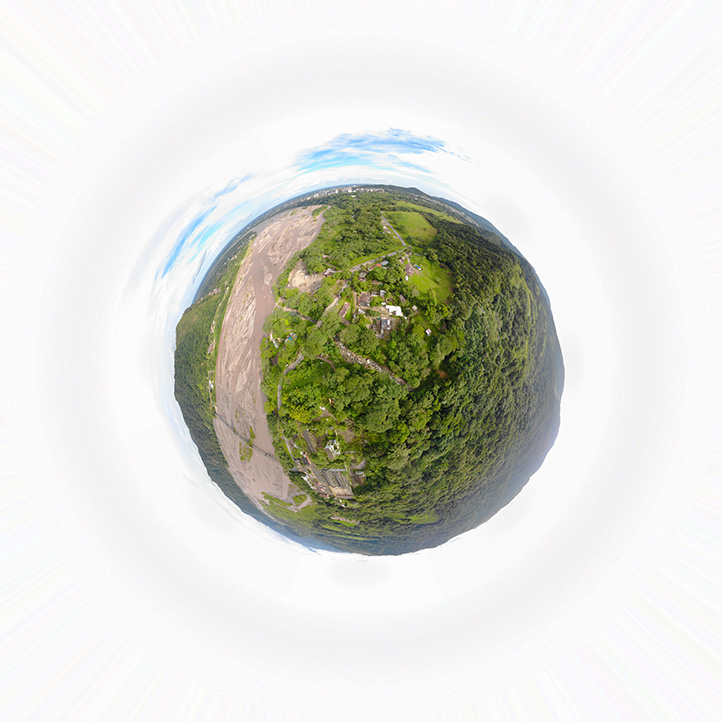#1 Birding Hotspot in Meta: Bosque Bavaria. Only 5 min. from Villavicencio!
The Bosque Bavaria in Villavicencio is one of the main hotspots for bird watching in Colombia and the first hotspot in the department of Meta. It is considered a place of ornithological interest due to the high concentration of bird species in a relatively small area. In this place more than 350 bird species have been registered.
In this place is located the Proaves Orange-breasted Falcon (Falco deiroleucus) Bird Nature Reserve which, together with the forests of the former Bavaria beer company headquarters, preserves the forest in the piedmont plains of Los Llanos sheltering bird species in a gradient between 200 and 1100 meters above sea level.
Guatiquía River Canyon (IBA)
Bosque Bavaria Hotspot is part of the Important Bird Area (IBA) Guatiquía River Canyon. The Guatiquía River Canyon is located on the eastern slope of the Eastern mountain range of Colombia, in the Llanos piedmont. Guatiquía IBA is part of the department of Meta and covers an area of 450 square kilometers.
The Guatiquía River Canyon goes up from the Bavaria bridge in Villavicencio, at 400 meters above sea level, to the Chingaza paramo, at 3,000 meters above sea level. It crosses towns such as Montfort, San Francisco, El Calvario, Santa Teresa, Candelaria and San Juanito.

The fairly wide altitudinal gradient of the IBA Guatiquía River Canyon favors the presence of fauna and flora belonging to different thermal floors. Globally threatened species, restricted-range species and biome-restricted species are found in this area.
Among them, it is worth mentioning the Band-tailed Guan (Penelope argyrotis), Blue-throated Starfrontlet (Coeligena helianthea), Crimson-rumped Toucanet (Aulacorhynchus haematopygus), Brown-breasted Parakeet (Pyrrhura calliptera), Cundinamarca Antpitta (Grallaria kaestneri), Andean Siskin (Spinus spinescens), Ochre-breasted Brush-finch (Atlapetes semirufus), Pale-naped Brush-finch (Atlapetes pallidinucha) and Moustached Brush-finch (Atlapetes albofrenatus).
It is possible to do a bird watching daytrip from the paramo to the lower part of the piedmont, you just need a good guide and a 4×4 truck.
Bosque Bavaria Location
The Bavaria forest is located five minutes from the city of Villavicencio, Meta, in the vicinity of the old Bavaria brewery warehouse. You can find it on the left side of the road that leads to the municipality of Restrepo, shortly before crossing the bridge over the Guatiquía River.
The forest is part of a transitional piedmont forest fragment between the mountainous part and the adjacent plains. Bosque Bavaria is a tropical humid forest formed by slightly altered primary and secondary forests.
It is located at an altitude ranging between 467 and 651 meters above sea level and is the boundary between the bird species present in the low areas of the Orinoco and the species typical of the mountainous forests of the Eastern Mountain Range.
Bosque Bavaria Weather
Bosque Bavaria has an average annual temperature of 27°C and an average annual rainfall of 3,663 mm (IGAC, 1996). Besides, the first period of rain occurs between April and May and the second between September and November; 62% of the total rain falls during these five months. Also, September and October are the rainiest months while January and February are the driest.
Birding in Bosque Bavaria, Meta
The tour is made along an unpaved road that connects several farms with the city. During the tour, you can observe the canyon of the Guatiquía River from the observation balconies offered by the steep forest slopes that surround the road.
Among with the Orange-breasted Falcon (Falco deiroleucus), there are other interesting birds such as the Gilded Barbet (Capito auratus), Speckled Chachalaca (Ortalis guttata), Amazonian Motmot (Momotus momota), White-chested Puffbird (Malacoptila fusca), Golden-headed Manakin (Ceratopipra erythrocephala), White-bearded Manakin (Manacus manacus), Sooty-capped Hermit (Phaethornis augusti), Moustached Antwren (Myrmotherula ignota), Amazonian Umbrellabird (Cephalopterus ornatus), Dwarf Cuckoo (Coccycua pumila), Green Manakin (Cryptopipo holochlora), and Striolated Manakin (Machaeropterus striolatus).
Besides birds, you can also find mammals such as the giant anteater (Myrmecophaga tridactyla), along with other animals such as turtles, and amphibians, butterflies, etc.
Butterfly Watching in Bosque Bavaria
The list of butterflies that live in Bosque Bavaria is composed of about 470 species. This region is the best sampled in butterflies in the entire Eastern Cordillera and has a high potential for butterfly watching tours.
Here are some of the butterfly species you can find in Bosque Bavaria:
Where to Stay near Bosque Bavaria Hotspot
There are several option to stay near Bosque Bavaria, either you stay at Villavicencio or in a nearby town called Restrepo.
However, for birders and nature lovers, I recommend Rancho Camaná Natural Reserve as the nearest place to stay when you visit Bosque Bavaria. Besides, from Rancho Camaná you can also visit other birding spots as Camino Monfortiano, Caney Alto, and Upin Salt Mines along the piedmont plains.
Recommendations
- Wear boots, a raincoat, and a mosquito protection.
- Disinfect shoes with hypochlorite or Clorox to prevent the dispersion of the chytrid fungus (one of the main causes of death of amphibians in the world).
If you want to know more about Colombian nature tours, or want to visit Bosque Bavaria or Guatiquía Canyon in Meta, follow us, write us comments, or just contact us.
References
- BirdLife International (2020) Important Bird Areas factsheet: Cañón del Río Guatiquía.
- Proyecto Mariposa
- Salazar-E, Julián & Nielsen, Gregory & Pacl, Vaclav. (2017). The Bavaria Forest (Villavicencio, Meta) revisited: New records added to the checklist of species (Lepidoptera: Rhopalocera). Boletín Científico del Centro de Museos. 21. 147-169. 10.17151/bccm.2017.21.2.10.
About the author
Sara Colmenares
Current director of Sula. Doctor in Biological Sciences. Her main interests are to explore and understand the organism – environment interactions, taking advantage of emerging knowledge for the management and conservation of species and ecosystem services. She is currently working as a consultant in functional ecology, ecosystem services and conservation projects in Colombia related to ecotourism and birdwatching.